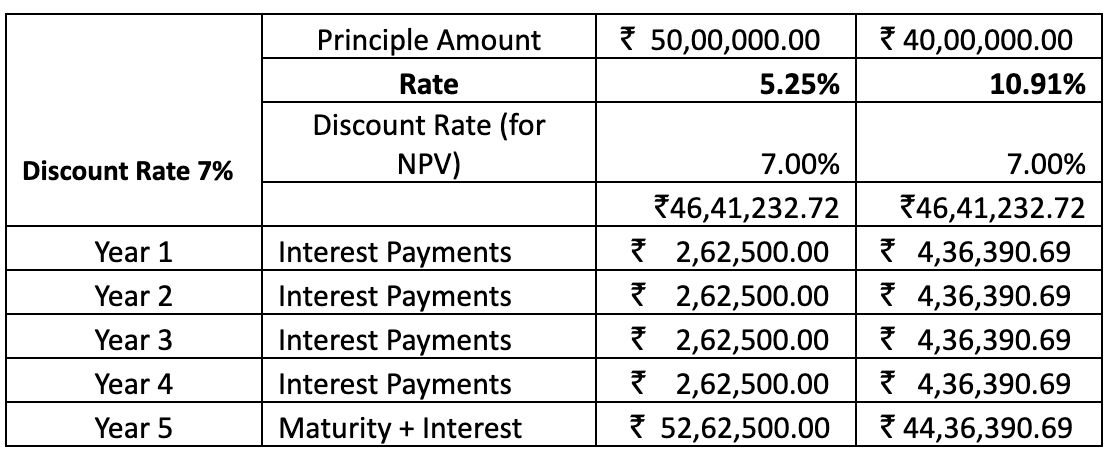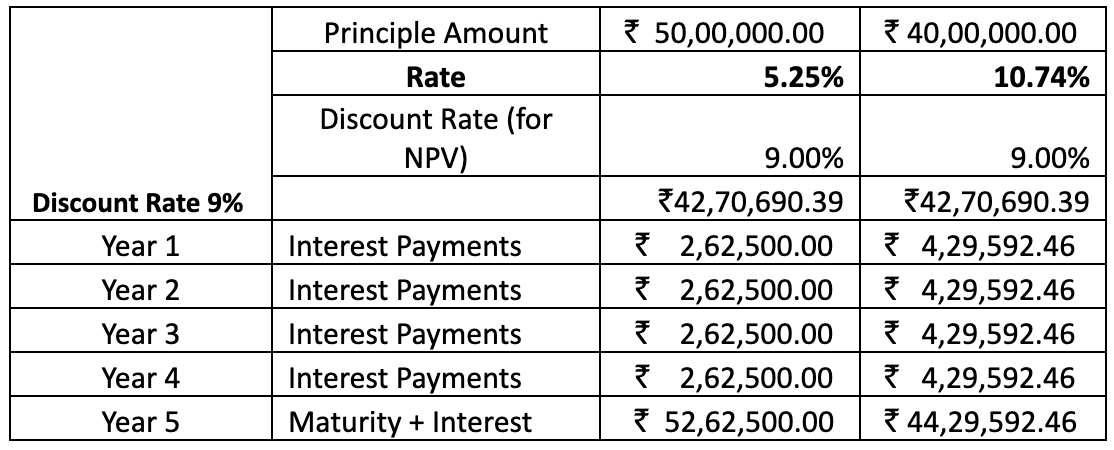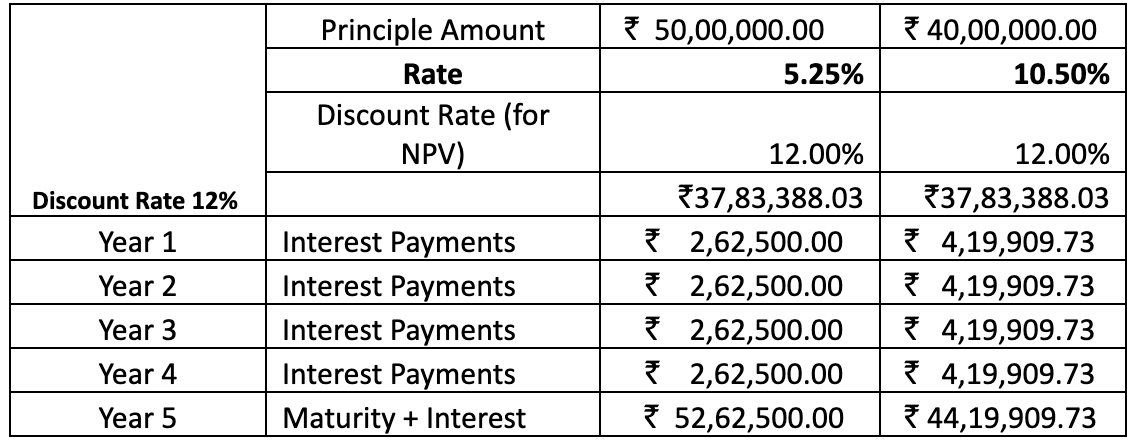


Source: iStockphoto
In the realm of tax-saving investments in India, the 54EC bond often emerges as a promising option for investors seeking to mitigate their tax liabilities while generating steady returns. These bonds, issued by the National Highways Authority of India (NHAI) or the Rural Electrification Corporation (REC), offer an alternative avenue for individuals looking to reinvest their capital gains from the sale of assets like property or stocks, thus availing tax exemptions under Section 54EC of the Income Tax Act, 1961.
The allure of these bonds lies in their tax-saving potential. However, an astute investor must weigh this against the opportunity cost of locking in funds that could otherwise be deployed elsewhere for potentially higher returns. Let's delve into a comparative analysis to shed light on whether investing in 54EC bonds is indeed the optimal choice for tax optimization.
Suppose an individual has capital gains of ₹50 lakhs from the sale of a property or asset. Under normal circumstances, if this amount were to be offered to taxation, the post-tax corpus would amount to 20% less, resulting in ₹40 lakhs available for reinvestment.
To evaluate the two scenarios – investing in 54EC bonds versus paying taxes and investing the remaining amount – we employ the Net Present Value (NPV) method. NPV, a fundamental financial metric, assesses the present value of future cash flows, discounted at a specified rate. This approach facilitates a comprehensive comparison of investment alternatives by considering the time value of money.
Now, let's consider three discount rates: 7%, 9%, and 12%. These rates represent varying investment benchmarks: 7% approximates the prevailing Government of India (GOI) bond rate, 9% reflects returns for a balanced equity-debt risk profile, while 12% signifies the expected long-term equity returns in India.
Note: In the following tables, the rate mentioned (row 2 in each of the tables) represents two critical points. Firstly, it indicates the current interest rate for the 54EC bond. Secondly, it signifies the rate required (for the without 54EC bond option) at which the Net Present Value (NPV) from the different cash flows becomes equal. In simpler terms, this means that at this rate, both situations — investing in 54EC bonds and the alternative option without them — are equally beneficial. This clarification aims to assist the reader in comprehending the comparison between investing in 54EC bonds and the alternative option.



By computing the NPV of both scenarios at these discount rates, we can discern the threshold return rate at which investing in alternatives outweighs the tax-saving benefits of 54EC bonds. In essence, if an investment opportunity presents a return exceeding this threshold, it may be more prudent to pay taxes and pursue higher yielding ventures.
Now, considering the approximate 11% threshold as the benchmark for comparison (as indicated by the tables above), if an investment can generate returns comfortably exceeding this rate, it would make more sense to pay the tax rather than invest in the bond.
In conclusion, while 54EC bonds offer tax-saving advantages, investors must assess their investment options diligently, taking into account the NPV analysis and the prevailing market conditions. By understanding the implications of different discount rates and investment returns, individuals can make informed decisions aligned with their financial objectives and risk appetite.
Disclaimer: The data/information compilation in this article is the Author’s comment on general trends in the securities market and discussions of broad-based indices. The information/data provided here is not a research report as defined under the Securities and Exchange Board of India (Research Analysts) Regulations, 2014 (SEBI RA Regulation, 2014). Thus, the Author is not required to have registration as a Research Analyst under the SEBI RA Regulation, 2014.
The information/data provided in this article is from publicly available data, and appropriate references have been given, which we believe are reliable. While reasonable endeavours have been made to present reliable data related to current and historical information, the Author does not guarantee the accuracy or completeness of the data/ information in this article. Accordingly, the Author or any of his connected persons, including his associates or employees, shall not be in any way responsible for any loss or damage that may arise to any person from any inadvertent error in the information/data contained, views and opinions expressed in this article.
The information/data provided in the article is purely for information purposes and to disseminate knowledge on the general trends in the securities market. The same does not constitute investment recommendation/advice or an offer or solicitation of an offer to buy/sell any securities.
No person should rely solely on the information/data in this article and must make investment decisions based on their own investment objectives, judgment, risk profile and financial position. The recipients of the article may take necessary professional advice before acting on it.
Investment in securities market are subject to market risks. Read all the related documents carefully before investing.